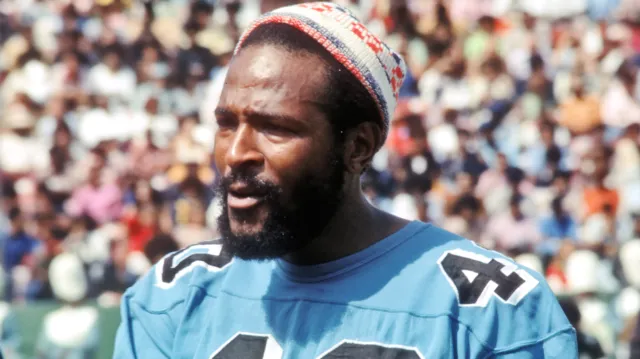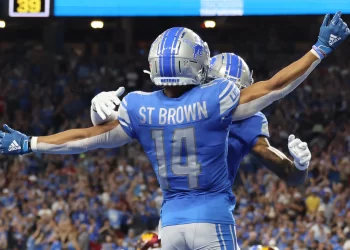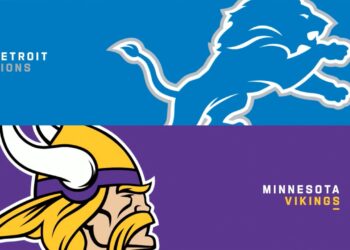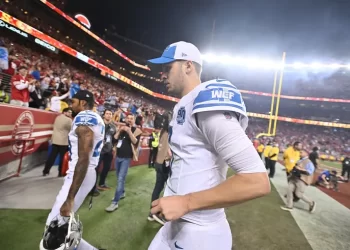By: Zachary Draves
40 years after his untimely death, Marvin Gaye is often looked at as a tortured genius.
A man with a soothing voice and a dynamic presence that can only be described as soulful in every sense of the word. Yet at the same time he was tremendously haunted by his demons stemming from an abusive childhood at the hands of his preacher father, who would be the one to pull the trigger on April 1, 1984.
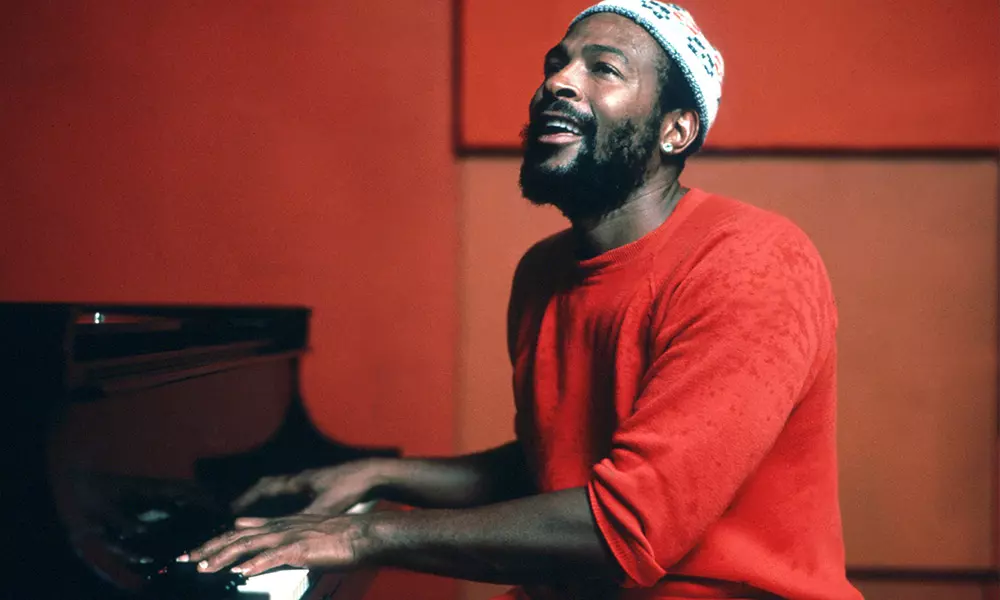
(Courtesy: Jim Britt/Michael Ochs Archives/Getty Images)
His musical legacy needs no real addendum. His breakthrough with Motown, his amazing duets with Tammi Terrell, the ultimate betrayal anthem in “I Heard It Through the Grapevine”, his socially conscious What’s Going On, the sexually liberating Let’s Get It On, the poignant Hear My Dear, and the merging of the spiritual with the sensual in “Sexual Healing” speaks to the wide range of emotions that Marvin was able to conjure with such remarkable brilliance.
“His legacy was really strong” said David Ritz, author of the 1985 biography Divided Soul: The Legacy of Marvin Gaye. “He was to RNB what John Coltrane was to Jazz.”
But what many may not know about him is that the way he gave his music his all, he tried to do with sports.
At an early age, Marvin was prohibited by his father Marvin Sr. from engaging in all things deemed secular, which included sports. His father was notorious for being a cross dresser, which had a profound effect on Marvin, and was known for being physically abusive.
As a result, Marvin lived his life feeling as if he wasn’t good enough or in some instance manly enough.
He tried his hand at sports as a way to compensate for what was missing from his early years and to show that he was in fact masculine.
Marvin was an avid runner, tried boxing, played basketball, and even had a futile idea of quitting the music business and trying out for the Detroit Lions.

(Courtesy: Michael Ochs Archives/Getty Images)
While he was recording What’s Going On, which was released in 1971, Marvin was in a tempestuous relationship with Motown over the direction of his career and the music he was creating. Label head Berry Gordy didn’t have confidence in Marvin in putting out work that went against the assembly line formula of well produced pop songs that made Motown transcendent.
It was then that he had conceived of wanting to try out for the Lions and had developed friendships with notable Lion players Lem Barney and Mel Farr, who were featured at the beginning of the title track “What’s Going On” engaged in chatter and conversation.
Marvin never actually pursued a career in the NFL.
Ritz said that Marvin’s drug use, which he battled in his later years, played a part in his thinking that he could do certain things.
“His delusions of grandeur were just that,” he said. “He was a pot smoker, he was high all the time, all these things contributed to his delusions.”
Marvin also had recreational basketball games with the likes of Rev. Jesse Jackson and played one on one during an episode of Soul Train with legendary host Don Cornelius.
(Courtesy: History Photographed/X)
In 1979, when he was at rock bottom in his career, Marvin poured his heart and money into boxer Andy Price in a fight with Sugar Ray Leonard that he thought would give him purpose again. The idea was that Price was going to defeat boxing’s heir apparent to Muhammad Ali and Marvin would be saved financially and emotionally.
The fight which took place on September 28, 1979 at Cesar’s Palace in Las Vegas ended with Leonard scoring a knockout win over Price with eight seconds left in the first round.
Marvin was absolutely crushed.
“He was living vicariously through Andy,” said Ritz. “Andy getting knocked out made Marvin think he was knocked out.”
It turned out that he had a complicated relationship with sports because in some ways it helped to fill a void, but in other ways it only reinforced the inner pain he endured.
“I think sports was a huge part of his life that gave him both pleasure and pain, ” said Ritz. “It gave him pleasure because he could play but I think it gave him pain because it gave him no glory and I think Marvin needed glory.”
Perhaps his greatest contribution to sports was not of him participating, but rather him doing what he did best and breaking new ground in the process.
His soulful rendition of the national anthem at the 1983 NBA All-Star game in Los Angeles still remains a monumental staple in American popular culture history. In the midst of his resurgence with “Sexual Healing” as well as his continued battle with drugs, he blew everyone away.

(Courtesy: Youtube)
But originally, Marvin didn’t want to do it and asked Luther Vandross to take his place.
“He had real doubts about his abilities,” said Ritz. “Luther says no. Marvin, his brother in law Gordon Banks, did the track and the track was funky. They did a rough mix the night before and if you listen to it the track was kind of rough, but Marvin was able to funk over it and make it his own.”
The players on the court included Julius “Dr. J” Erving, Kareem Abdul Jabbar,Magic Johnson, Isaiah Thomas, and others and they relished in seeing Marvin.
“Marvin’s pinnacle of his relationship with sports was not being a participant, but being able to offer them an extremely black version of the national anthem and knowing that they were loving it” said Ritz.
Marvin Gaye used sports the same way he used music, for validation.
There was no mountain high enough, no valley low enough, and no river wide enough that kept him from seeking that.


 NFL
NFL